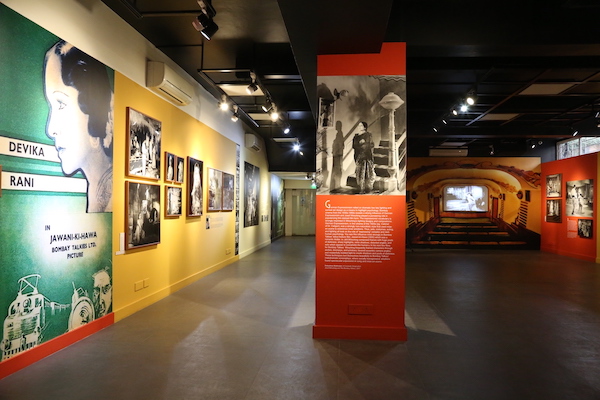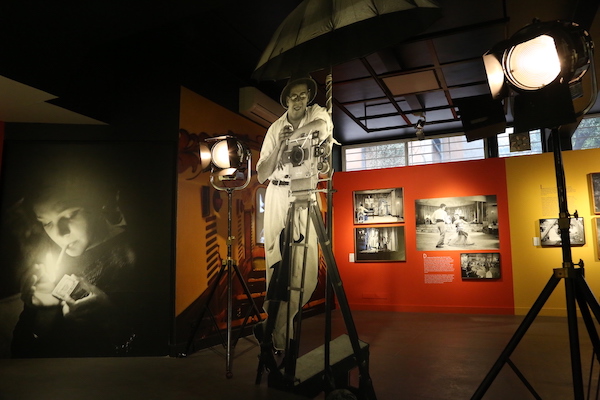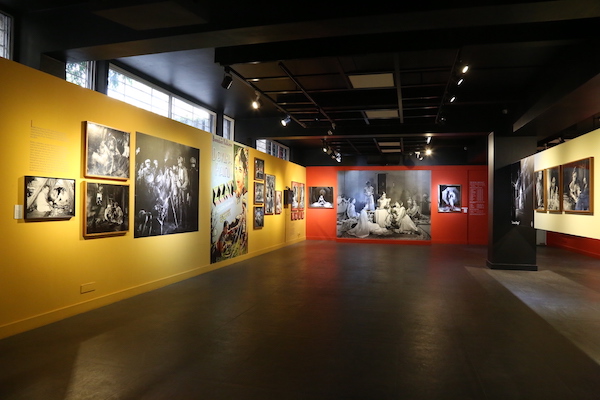2 Anthologies on South Asian Photography and Cinema to Be Launched at Columbia University Symposium
- The books provoke a new look at questions of artistic practice and its relations to collaborative world-making, knowledge production and archival memory.

Two new anthologies on South Asian photography and cinema will be launched next week at a symposium at Columbia University in New York City. The two books — “Bombay Talkies: An Unseen History of Indian Cinema” (Alkazi Collection of Photography and Mapin Publishing) and “Unframed: Discovering Image Practices in South Asia” (Alkazi Foundation for the Arts and HarperCollins Publishers India) — provoke a new look at questions of artistic practice and its relations to collaborative world-making, knowledge production and archival memory, according to a university description of the event.

“Bombay Talkies,” launched previously at the Jaipur Literature Festival in Delhi earlier this year, presents rare behind-the-scenes photographs from the personal archive of the cinematographer Josef Wirsching who moved from Munich to Bombay during the Nazi takeover of film studios in Germany. The book is rare because it gives access to the aesthetic decisions, creative communities, and cross-cultural exchanges that were vital to filmmaking in late colonial South Asia. Also, as is common with literature on Indian cinema, Wirsching is not an actor, filmmaker, or musician, but someone who dictates the overall look and visual style of the production.

Most of the photographs in the book were taken in the 1930s and ’40s when Wirsching was employed at the legendary film studio, Bombay Talkies Ltd. Shot across film sets and outdoor locations they convey a world of meaning that ran parallel to the world of the silver screen. As a specific genre, the “behind-the-scenes” photo expands the limits of the film frame by showing us that which lay just outside, adjacent to, and beyond the movie camera. Shot primarily on a Leica camera, and preserved by Wirsching’s grandsons, Georg and Josef (Jr.), these images not only unsettle the boundaries between film and photography, Indian and foreign, but also give rare access to the aesthetic decisions, creative communities, and cross-cultural exchanges that were vital to filmmaking in late colonial South Asia.
“Unframed,” which includes an array of essays and interviews, hopes to “give the extent to which images may be productively and ethically produced in an era of volatile ‘post-truth’ mass media/social media ethos, the university says.
Speakers at the event include Rahaab Allana, curator/publisher, Alkazi Foundation for the Arts, New Delhi; Iftikhar Dadi, John H. Burris Professor and chair of the Department of History of Art and Director of the South Asia Program at Cornell University; Noam M Elcott, Associate Professor for the history of modern art and Director of the Center for Comparative Media at Columbia University; Chitra Ganesh, a Brooklyn-based visual artist; Bakirathi Mani; professor of English and co-director of the Tri-College Asian American Studies Program at Swarthmore College; and Sudhir Mahadevan, associate professor in the Department of Cinema and Media Studies at the University of Washington, Seattle, and adjunct professor in the South Asia Center at the university’s Jackson School of International Studies.

“Camera South Asia: A Symposium on Cinema and Photography” will be held on April 27 at 4:00 p.m. at the Altschul Hall, Lehman Auditorium (Room 202) at Barnard College.
(Photos are from the collection of photographs from Josef Wirsching author of “Bombay Talkies: An Unseen History of Indian Cinema” displayed at the Art Heritage Gallery in New Delhi.)


